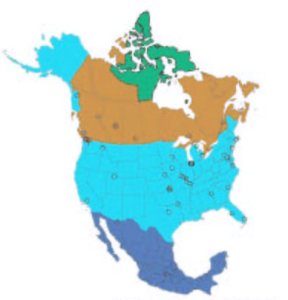Carved from the Northwest Territories, Nunavut became Canada’s newest territory* last year. This huge arctic territory is home to a mere 24,000 people, mostly native Inuit. Though Nunavut lacks heavy industries, it hasn’t avoided their toxic fallout. The breast milk of Inuit women there, for instance, contains twice the average concentration of dioxin found in the milk of women in southern Quebec. One reason is that the Inuit diet consists primarily of fatty animals high in the food chain, which accumulate especially high concentrations of dioxin.

A new study finds that most of Nunavut’s dioxin comes from industrial combustion in the eastern and midwestern United States—not Canada. Some even originates as far away as Mexico. The Montreal-based Commission for Environmental Cooperation (CEC), created under the North American Free Trade Agreement, released the findings this week.
A computer program modeled the pollutant’s path. The program is able “to specify exactly which sources contribute, proportionately,” to the dioxin in Nunavut or any other area, explains study leader Barry Commoner, director of the Center for the Biology of Natural Systems at City University of New York.
Dioxin doesn’t target Nunavut, emphasizes Mark Cohen, the model’s developer and an atmospheric scientist who used to work with Commoner. Within a couple weeks of its release, dioxin has traveled in many directions, he notes, leaving North America “awash in it.”
His model generates a hypothetical puff of dioxin from each known or projected source every few hours throughout an entire year. The amount of dioxin in each puff depends on its source. The model then estimates how reported weather would have transported, dispersed, destroyed, or deposited the dioxin.
Cohen, now with the National Oceanic and Atmospheric Administration (NOAA) in Silver Spring, Md., adapted a NOAA model by Roland Draxler. Comparisons with real conditions confirmed that the model’s transport and dispersion predictions are fairly reliable, Draxler says. The greatest uncertainties that show up, he says, are in the model’s values for dioxin inputs. Cohen agrees, saying that the projections are “the best science can give us” until governments collect better dioxin-production data.
The CEC commissioned the study of 44,000 different cement kilns, incinerators, and other dioxin producers “to test the feasibility of tracking dioxins from source to receptor on a continental scale,” explains Program Director Greg Block. Its success, he told Science News, offers policy makers and communities, such as Nunavut, a tool for understanding the global impacts of persistent organic chemicals. Many, such as dioxin, are slated for elimination (SN: 7/4/98, p. 6).
Commoner hopes the data prompt efforts to reduce toxic chemicals at their sources. After ll, he notes, “you can’t put up an umbrella to keep them out of Nunavut, or even off a dairy farm in the United States.”
*Updated to correct an error. Nunavut is a territory, not a province.






